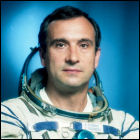 The cosmonaut who still holds the record for the longest single stay in space, Dr. Valery Polyakov, dies at the age of 80. Born in 1942, Polyakov joined the cosmonaut corps in 1972, and then had to wait sixteen years for his first flight, aboard Soyuz TM-6 to the Mir space station in 1988, where he stayed for 240 days. In January 1994 he returned to Mir aboard the Soyuz TM-18 mission, and remained in orbit for a continuous 437 day stay, still the longest continuous spaceflight undertaken by a human being at the time of his death. He returned to Earth in March 1995 and retired from the active cosmonaut rotation a few months later, remaining with the post-Soviet Russian space program as an advisor in the area of the health effects of long-term spaceflight, as well as having a hand in selecting future cosmonauts. He was awarded both the Hero of the Soviet Union and the Hero of the Russian Federation over the course of his career. Though fellow cosmonaut Sergei Adveyev holds the record for the most time in space, that time was accumulated over the course of three missions; as of 2022, Polyakov’s single-flight record remains unbroken.
The cosmonaut who still holds the record for the longest single stay in space, Dr. Valery Polyakov, dies at the age of 80. Born in 1942, Polyakov joined the cosmonaut corps in 1972, and then had to wait sixteen years for his first flight, aboard Soyuz TM-6 to the Mir space station in 1988, where he stayed for 240 days. In January 1994 he returned to Mir aboard the Soyuz TM-18 mission, and remained in orbit for a continuous 437 day stay, still the longest continuous spaceflight undertaken by a human being at the time of his death. He returned to Earth in March 1995 and retired from the active cosmonaut rotation a few months later, remaining with the post-Soviet Russian space program as an advisor in the area of the health effects of long-term spaceflight, as well as having a hand in selecting future cosmonauts. He was awarded both the Hero of the Soviet Union and the Hero of the Russian Federation over the course of his career. Though fellow cosmonaut Sergei Adveyev holds the record for the most time in space, that time was accumulated over the course of three missions; as of 2022, Polyakov’s single-flight record remains unbroken.
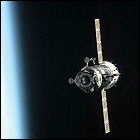 Part of the 33rd full-time crew of the International Space Station lifts off from Russia’s Baikonur Cosmodrome aboard Soyuz TMA-06M. Oleg Novitskiy, Evgeny Tarelkin and Kevin Ford take up residence on the ISS for 143 days, becoming part of the Expedition 33/34 crews. All three return to Earth in March 2013 aboard the same vehicle.
Part of the 33rd full-time crew of the International Space Station lifts off from Russia’s Baikonur Cosmodrome aboard Soyuz TMA-06M. Oleg Novitskiy, Evgeny Tarelkin and Kevin Ford take up residence on the ISS for 143 days, becoming part of the Expedition 33/34 crews. All three return to Earth in March 2013 aboard the same vehicle.
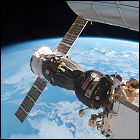 Part of the 34th full-time crew of the International Space Station lifts off from Russia’s Baikonur Cosmodrome aboard Soyuz TMA-07M. Roman Romanenko, Chris Hadfield and Thomas Marshburn take up residence on the ISS for 145 days, becoming part of the Expedition 34/35 crews. All three return to Earth in May 2013 aboard the same vehicle, with Hadfield becoming an internet sensation at the end of the mission with a cover of David Bowie’s “A Space Oddity” recorded aboard the station.
Part of the 34th full-time crew of the International Space Station lifts off from Russia’s Baikonur Cosmodrome aboard Soyuz TMA-07M. Roman Romanenko, Chris Hadfield and Thomas Marshburn take up residence on the ISS for 145 days, becoming part of the Expedition 34/35 crews. All three return to Earth in May 2013 aboard the same vehicle, with Hadfield becoming an internet sensation at the end of the mission with a cover of David Bowie’s “A Space Oddity” recorded aboard the station.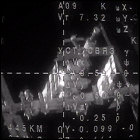 Soyuz TMA-08M lifts off from Russia, testing a new “fast track” trajectory to the International Space Station. With cosmonauts Pavel Vinogradov and Alexander Misurkin, and astronaut Chris Cassidy aboard, the Soyuz capsule reaches the Station only six hours after liftoff, as opposed to the usual two days. The three new crew members join Expedition 35.
Soyuz TMA-08M lifts off from Russia, testing a new “fast track” trajectory to the International Space Station. With cosmonauts Pavel Vinogradov and Alexander Misurkin, and astronaut Chris Cassidy aboard, the Soyuz capsule reaches the Station only six hours after liftoff, as opposed to the usual two days. The three new crew members join Expedition 35.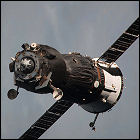 Part of the 36th full-time crew of the International Space Station lifts off from Russia’s Baikonur Cosmodrome aboard Soyuz TMA-09M. Fyodor Yurchikhin, Karen Nyberg and Luca Parmitano take up residence on the ISS for 166 days, becoming part of the Expedition 36/37 crews. Once again, a new “fast track” trajectory propels Soyuz from launch to docking at the ISS in under six hours. This crew returns to Earth in November 2013 aboard the same vehicle.
Part of the 36th full-time crew of the International Space Station lifts off from Russia’s Baikonur Cosmodrome aboard Soyuz TMA-09M. Fyodor Yurchikhin, Karen Nyberg and Luca Parmitano take up residence on the ISS for 166 days, becoming part of the Expedition 36/37 crews. Once again, a new “fast track” trajectory propels Soyuz from launch to docking at the ISS in under six hours. This crew returns to Earth in November 2013 aboard the same vehicle.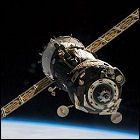 Part of the 37th full-time crew of the International Space Station lifts off from Russia’s Baikonur Cosmodrome aboard Soyuz TMA-10M. Oleg Kotov, Sergey Ryazansky and Michael Hopkins take up residence on the ISS for 166 days, becoming part of the Expedition 37/38 crews. Use of the recently developed “fast track” trajectory resumes, taking Soyuz from launch to docking at the ISS in under six hours. This crew returns to Earth in March 2014 aboard the same vehicle.
Part of the 37th full-time crew of the International Space Station lifts off from Russia’s Baikonur Cosmodrome aboard Soyuz TMA-10M. Oleg Kotov, Sergey Ryazansky and Michael Hopkins take up residence on the ISS for 166 days, becoming part of the Expedition 37/38 crews. Use of the recently developed “fast track” trajectory resumes, taking Soyuz from launch to docking at the ISS in under six hours. This crew returns to Earth in March 2014 aboard the same vehicle.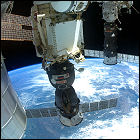 Soyuz TMA-11M is launched from Russia, on a fast-track trajectory to the International Space Station. The crew – Mikhail Tyurin, Rick Mastracchio and Koichi Wakata – arrives just six hours after liftoff. Each of the crew has been in space on at least three prior missions. Also aboard the Soyuz is the Olympic torch, on its own first visit to space; the torch, along with the Expedition 37 crew, returns to Earth in May 2014. Though Soyuz vehicles are usually handed off to the next returning crew, Soyuz TMA-11M returns to Earth with the same crew after a six-month stay. This mission marked the first time the International Space Station was crewed by nine people simultaneously since the end of the Space Shuttle era.
Soyuz TMA-11M is launched from Russia, on a fast-track trajectory to the International Space Station. The crew – Mikhail Tyurin, Rick Mastracchio and Koichi Wakata – arrives just six hours after liftoff. Each of the crew has been in space on at least three prior missions. Also aboard the Soyuz is the Olympic torch, on its own first visit to space; the torch, along with the Expedition 37 crew, returns to Earth in May 2014. Though Soyuz vehicles are usually handed off to the next returning crew, Soyuz TMA-11M returns to Earth with the same crew after a six-month stay. This mission marked the first time the International Space Station was crewed by nine people simultaneously since the end of the Space Shuttle era.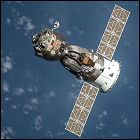 Part of the 39th full-time crew of the International Space Station lifts off from Russia’s Baikonur Cosmodrome aboard Soyuz TMA-12M. Aleksandr Skvortsov, Oleg Artemyev and Steven Swanson take up residence on the ISS for 169 days, becoming part of the Expedition 39 and 40 crews. This crew returns to Earth in September 2014 aboard the same vehicle.
Part of the 39th full-time crew of the International Space Station lifts off from Russia’s Baikonur Cosmodrome aboard Soyuz TMA-12M. Aleksandr Skvortsov, Oleg Artemyev and Steven Swanson take up residence on the ISS for 169 days, becoming part of the Expedition 39 and 40 crews. This crew returns to Earth in September 2014 aboard the same vehicle.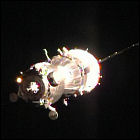 The 122nd Soyuz vehicle launched, Soyuz TMA-13M, lifts off from Russia to the International Space Station, carrying the station’s 40th crew to its stay in orbit. Aboard are flight engineers Maksim Surayev, Greg Wiseman and Alexander Gerst; of the three, only Surayev has previous spaceflight experience, and he will become the ISS Commander upon the departure of Expedition 39. Expedition 40’s stay aboard the ISS is slated to last six months, and Soyuz TMA-13M will be used as a return vehicle by the crew of Expedition 41 later in 2014. Though Soyuz TMA-13M was intended to use the recently developed six-hour fast-track launch trajectory to reach the station the same day it launched, technical glitches delayed its arrival at the ISS until May 28th.
The 122nd Soyuz vehicle launched, Soyuz TMA-13M, lifts off from Russia to the International Space Station, carrying the station’s 40th crew to its stay in orbit. Aboard are flight engineers Maksim Surayev, Greg Wiseman and Alexander Gerst; of the three, only Surayev has previous spaceflight experience, and he will become the ISS Commander upon the departure of Expedition 39. Expedition 40’s stay aboard the ISS is slated to last six months, and Soyuz TMA-13M will be used as a return vehicle by the crew of Expedition 41 later in 2014. Though Soyuz TMA-13M was intended to use the recently developed six-hour fast-track launch trajectory to reach the station the same day it launched, technical glitches delayed its arrival at the ISS until May 28th.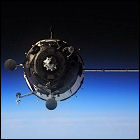 Part of the 40th full-time crew of the International Space Station lifts off from Russia’s Baikonur Cosmodrome aboard Soyuz TMA-14M. Upon arriving in orbit, one of the Soyuz solar panel “wings” fails to deploy, only unfolding properly once the vehicle has docked at the ISS. Aleksandr Samokutyayev, Yelena Serova and Barry Wilmore take up residence on the ISS, becoming part of the Expedition 40 and 41 crews. This crew returns to Earth in March 2015 aboard the same vehicle.
Part of the 40th full-time crew of the International Space Station lifts off from Russia’s Baikonur Cosmodrome aboard Soyuz TMA-14M. Upon arriving in orbit, one of the Soyuz solar panel “wings” fails to deploy, only unfolding properly once the vehicle has docked at the ISS. Aleksandr Samokutyayev, Yelena Serova and Barry Wilmore take up residence on the ISS, becoming part of the Expedition 40 and 41 crews. This crew returns to Earth in March 2015 aboard the same vehicle.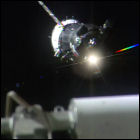 Russia launches three international crew members to the International Space Station aboard Soyuz TMA-17M. Upon reaching orbit, cosmonaut Oleg Kononenko and astronauts Kjell Lindgren and Kimiya Yui discover their spacecraft has a familiar problem: one of the Soyuz solar panel “wings” has failed to extend. As the vehicle is on a five-and-a-half-hour fast-track trajectory to the station, the mission continues and the Soyuz docks at the ISS without incident. After docking, the stuck solar panels extend fully, as happened in 2014’s Soyuz TMA-14M mission. The new visitors to the station will spend four months as part of the Expedition 44 crew.
Russia launches three international crew members to the International Space Station aboard Soyuz TMA-17M. Upon reaching orbit, cosmonaut Oleg Kononenko and astronauts Kjell Lindgren and Kimiya Yui discover their spacecraft has a familiar problem: one of the Soyuz solar panel “wings” has failed to extend. As the vehicle is on a five-and-a-half-hour fast-track trajectory to the station, the mission continues and the Soyuz docks at the ISS without incident. After docking, the stuck solar panels extend fully, as happened in 2014’s Soyuz TMA-14M mission. The new visitors to the station will spend four months as part of the Expedition 44 crew.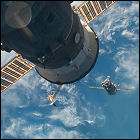 The second uprated Soyuz MS vehicle is launched from Baikonur Cosmodrome. The crew of Soyuz MS-02 are International Space Station Expedition 49 crew members Sergey Ryzhikov, Andrei Borisenko, and Shane Kimbrough; these three will become the Expedition 50 crew in November, and will return to Earth in February 2017 aboard the same vehicle.
The second uprated Soyuz MS vehicle is launched from Baikonur Cosmodrome. The crew of Soyuz MS-02 are International Space Station Expedition 49 crew members Sergey Ryzhikov, Andrei Borisenko, and Shane Kimbrough; these three will become the Expedition 50 crew in November, and will return to Earth in February 2017 aboard the same vehicle.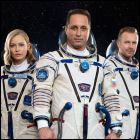 Soyuz MS-19 is launched to the International Space Station from Baikonur Cosmodrome, carrying a three-person crew (the first all-Russian Soyuz crew since Soyuz TM-30 in 2000) to a brief stay aboard the International Space Station. Cosmonaut Anton Shkaplerov, a veteran of three previous flights, commands and pilots the mission, whose other crewmembers, film director Klim Shipenko and actress Yulia Peresild, are passengers visiting the station to shoot approximately 40 minutes of footage for a movie to be released at a later date. The revival of “space tourism” aboard the ISS sparks new controversy about the topic, particularly within the Russian space program, mirroring similar controversy surrounding the burgeoning suborbital passenger spaceflight industry. Shipenko and Peresild return to Earth after 12 days aboard the ISS, catching a ride home aboard Soyuz MS-18 alongside returning ISS Commander Oleg Novitskiy; Shkaplerov remains aboard the ISS to assume command. Soyuz MS-19 will return the current ISS crew to Earth in March 2022.
Soyuz MS-19 is launched to the International Space Station from Baikonur Cosmodrome, carrying a three-person crew (the first all-Russian Soyuz crew since Soyuz TM-30 in 2000) to a brief stay aboard the International Space Station. Cosmonaut Anton Shkaplerov, a veteran of three previous flights, commands and pilots the mission, whose other crewmembers, film director Klim Shipenko and actress Yulia Peresild, are passengers visiting the station to shoot approximately 40 minutes of footage for a movie to be released at a later date. The revival of “space tourism” aboard the ISS sparks new controversy about the topic, particularly within the Russian space program, mirroring similar controversy surrounding the burgeoning suborbital passenger spaceflight industry. Shipenko and Peresild return to Earth after 12 days aboard the ISS, catching a ride home aboard Soyuz MS-18 alongside returning ISS Commander Oleg Novitskiy; Shkaplerov remains aboard the ISS to assume command. Soyuz MS-19 will return the current ISS crew to Earth in March 2022. The cosmonaut who still holds the record for the longest single stay in space, Dr. Valery Polyakov, dies at the age of 80. Born in 1942, Polyakov joined the cosmonaut corps in
The cosmonaut who still holds the record for the longest single stay in space, Dr. Valery Polyakov, dies at the age of 80. Born in 1942, Polyakov joined the cosmonaut corps in